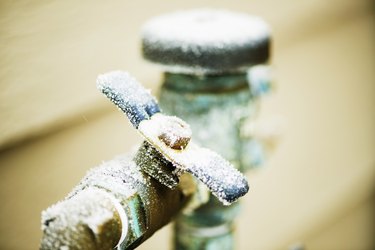Guidance for Avoiding Frozen Pipes in Winter: Expert Tips
Guidance for Avoiding Frozen Pipes in Winter: Expert Tips
Blog Article
What're your thoughts with regards to Helpful Tips to Prevent Frozen Pipes this Winter?

Winter can ruin your plumbing, especially by freezing pipelines. Below's how to avoid it from occurring and what to do if it does.
Intro
As temperature levels decline, the threat of icy pipelines rises, potentially resulting in expensive repair work and water damage. Comprehending exactly how to prevent frozen pipelines is crucial for homeowners in chilly environments.
Avoidance Tips
Shielding prone pipelines
Cover pipes in insulation sleeves or use warmth tape to protect them from freezing temperatures. Focus on pipes in unheated or outside areas of the home.
Home heating strategies
Maintain interior rooms sufficiently warmed, especially areas with plumbing. Open closet doors to allow cozy air to circulate around pipes under sinks.
Just how to identify icy pipes
Look for lowered water circulation from faucets, unusual smells or noises from pipes, and visible frost on subjected pipelines.
Long-Term Solutions
Structural changes
Think about rerouting pipelines away from outside wall surfaces or unheated areas. Add added insulation to attics, basements, and crawl spaces.
Updating insulation
Buy premium insulation for pipes, attics, and walls. Appropriate insulation assists keep regular temperature levels and minimizes the danger of frozen pipes.
Safeguarding Outside Pipes
Garden hose pipes and outdoor taps
Disconnect and drain pipes yard pipes before winter season. Install frost-proof faucets or cover outside faucets with insulated caps.
Understanding Frozen Pipes
What creates pipelines to ice up?
Pipes freeze when exposed to temperatures listed below 32 ° F (0 ° C) for extended periods. As water inside the pipes freezes, it expands, taxing the pipeline wall surfaces and possibly creating them to rupture.
Dangers and problems
Frozen pipes can cause water disturbances, property damage, and pricey repair work. Ruptured pipelines can flooding homes and trigger considerable structural damages.
Indications of Frozen Pipeline
Determining frozen pipelines early can stop them from breaking.
What to Do If Your Pipelines Freeze
Immediate actions to take
If you suspect icy pipelines, keep faucets open up to eliminate pressure as the ice melts. Utilize a hairdryer or towels soaked in hot water to thaw pipelines gradually.
Conclusion
Preventing frozen pipes needs aggressive steps and fast reactions. By comprehending the causes, signs, and preventive measures, home owners can protect their pipes throughout cold weather.
5 Ways to Prevent Frozen Pipes
Drain Outdoor Faucets and Disconnect Hoses
First, close the shut-off valve that controls the flow of water in the pipe to your outdoor faucet. Then, head outside to disconnect and drain your hose and open the outdoor faucet to allow the water to completely drain out of the line. Turn off the faucet when done. Finally, head back to the shut-off valve and drain the remaining water inside the pipe into a bucket or container. Additionally, if you have a home irrigation system, you should consider hiring an expert to clear the system of water each year.
Insulate Pipes
One of the best and most cost-effective methods for preventing frozen water pipes is to wrap your pipes with insulation. This is especially important for areas in your home that aren’t exposed to heat, such as an attic. We suggest using foam sleeves, which can typically be found at your local hardware store.
Keep Heat Running at 65
Your pipes are located inside your walls, and the temperature there is much colder than the rest of the house. To prevent your pipes from freezing, The Insurance Information Institute suggests that you keep your home heated to at least 65 degrees, even when traveling. You may want to invest in smart devices that can keep an eye on the temperature in your home while you’re away.
Leave Water Dripping
Moving water — even a small trickle — can prevent ice from forming inside your pipes. When freezing temps are imminent, start a drip of water from all faucets that serve exposed pipes. Leaving a few faucets running will also help relieve pressure inside the pipes and help prevent a rupture if the water inside freezes.
Open Cupboard Doors
Warm your kitchen and bathroom pipes by opening cupboards and vanities. You should also leave your interior doors ajar to help warm air circulate evenly throughout your home.

Do you like more info about How to Prevent Your Pipes From Freezing? Try leaving a review below. We'd be pleased to see your insights about this article. We hope to see you back again before long. Do you know someone else who is fascinated with the topic? Do not hesitate to share it. Thanks for being here. Don't forget to check up our site back soon.
Phone Report this page